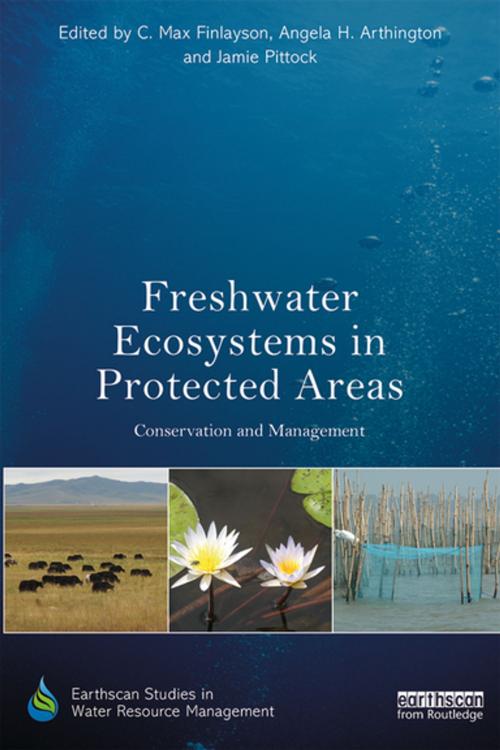Freshwater Ecosystems in Protected Areas
Conservation and Management
Nonfiction, Science & Nature, Nature, Environment, Environmental Conservation & Protection| Author: | ISBN: | 9781351849968 | |
| Publisher: | Taylor and Francis | Publication: | January 2, 2018 |
| Imprint: | Routledge | Language: | English |
| Author: | |
| ISBN: | 9781351849968 |
| Publisher: | Taylor and Francis |
| Publication: | January 2, 2018 |
| Imprint: | Routledge |
| Language: | English |
Freshwater ecosystems have the greatest species diversity per unit area and many endangered species. This book shows that, rather than being a marginal part of terrestrial protected area management, freshwater conservation is central to sustaining biodiversity. It focuses on better practices for conserving inland aquatic ecosystems in protected areas, including rivers, wetlands, peatlands, other freshwater and brackish ecosystems, and estuaries.
The authors define inland aquatic ecosystems, showing just how diverse and widespread they are. They examine the principles and processes that are essential for the conservation of freshwater ecosystems and aquatic species. Major categories of threats to freshwater ecosystems and the flow-on implications for protected area design are described. Practical case studies are used to illustrate principles and practices applied around the world. Specific management needs of the main types of freshwater ecosystems are considered, as well as the management of freshwaters in the broader landscape, showing how natural resource governance processes can be harnessed to better manage freshwater biodiversity. The book offers commentary on how to adapt freshwater conservation practices to climate change and ends with an insightful synthesis.
Freshwater ecosystems have the greatest species diversity per unit area and many endangered species. This book shows that, rather than being a marginal part of terrestrial protected area management, freshwater conservation is central to sustaining biodiversity. It focuses on better practices for conserving inland aquatic ecosystems in protected areas, including rivers, wetlands, peatlands, other freshwater and brackish ecosystems, and estuaries.
The authors define inland aquatic ecosystems, showing just how diverse and widespread they are. They examine the principles and processes that are essential for the conservation of freshwater ecosystems and aquatic species. Major categories of threats to freshwater ecosystems and the flow-on implications for protected area design are described. Practical case studies are used to illustrate principles and practices applied around the world. Specific management needs of the main types of freshwater ecosystems are considered, as well as the management of freshwaters in the broader landscape, showing how natural resource governance processes can be harnessed to better manage freshwater biodiversity. The book offers commentary on how to adapt freshwater conservation practices to climate change and ends with an insightful synthesis.















